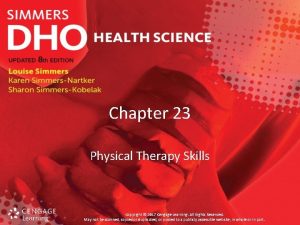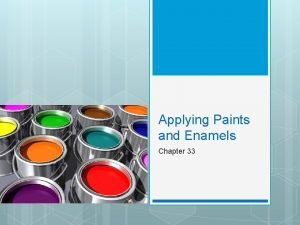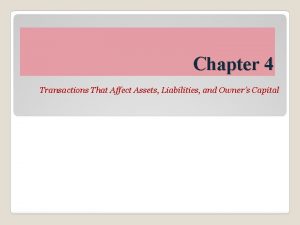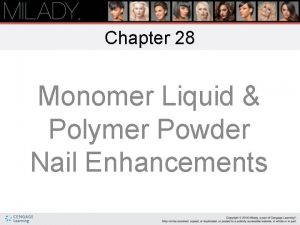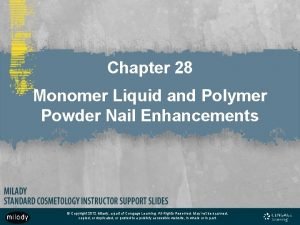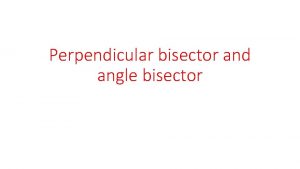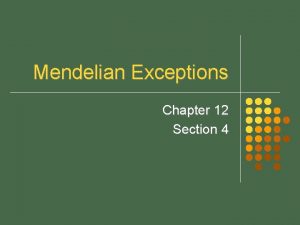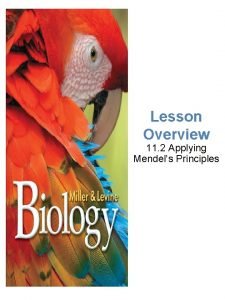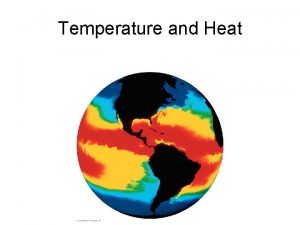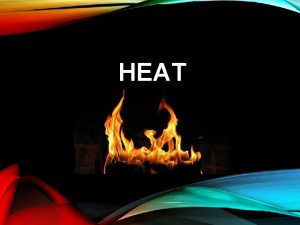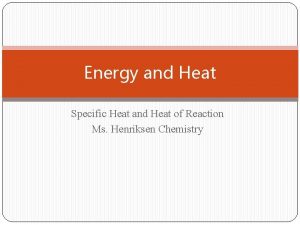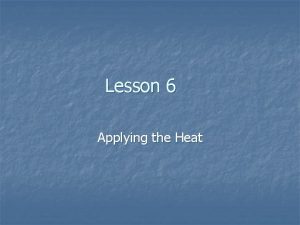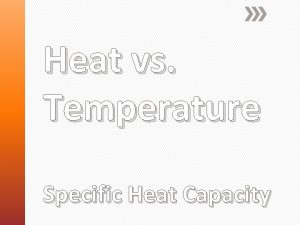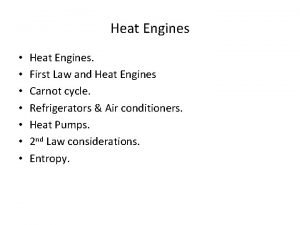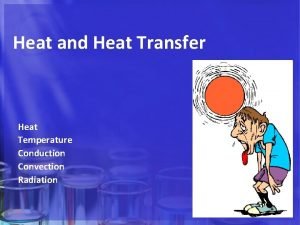Applying Heat and cold Applying Heat and cold















- Slides: 15

• Applying Heat and cold

Applying Heat and cold applications of heat or cold are frequently ordered and may be carried out in many different ways using variety of equipment. .

Action of heat Vasodilation blood vessels (expand ). When heat applied systemically, the nurse should assess for increased respiratory rate and hypotension. Purpose 1 - To relive pain from muscle spasm and effected joint. 2 - Reduces swelling

3 - Help to eliminate any toxic waste products that have accumulated in the area of swelling. 4 - Heat relaxes muscle. 5 - Promote healing by increase oxygen. 6 - Raise the body temperature.

Types of local heat applying 1 - dry heat Purpose : 1 - Treat muscle sprains. 2 - Mild inflammation. 3 - Pain relief. e. g. heat lamp, hot water bag (105 F ).

2 - moist heat 1 - Moist compresses purpose 1 - To stimulate circulation. 2 - Promote wound drainage. 3 - Apply medication. Solution used : water, mild antiseptic, normal saline.

2 - Warm soak (15 -20 m) solution like above. Centigrade Hot 37 - 40. 5 Very hot 40 – 46

Cold applying Action Vasoconstriction (which decrease the amount of the blood flow to an area. Purposes 1 - Slow or stop bleeding. 2 - Slows bacterial activity in clients with an infection.

3 - Relives pain following some types of surgery, head ache. 4 - Reduces swelling in injured tissues. 5 - Control pain and fluid loss in the initial treatment of burns. Types of cold application 1 - Cold moist compresses. uses: to reduce swelling and inflammation 2 - Ice bag or ice collar uses headache, tonsillectomy

6 - Applied to a sprain, strain, fracture, burn. centigrade Very cold below 13 c Cold 1318 c Cool 18 - 27 c Tepid 27 - 34 c

General procedure for applying heat and cold Assessment 1 - Check order. 2 - Assess patient, including general condition, vital signs, locale site, and response to previous treatment. 3 - Check pts room for equipment. Planning 4 - Wash your hands 5 - Obtain appropriate device.

Implementation 6 - Identify pt. 7 - Explain procedure to pt. 8 - Provide for patients privacy and comfort. 9 - Prepare pt. 10 - Place heating or cooling device over body part. 11 - Cover device with soft cloth cover. 12 - Return to pt in 10 to 15 minutes to assess therapeutic or adverse effects.

13 - Remove heating or cooling device, leaving on no longer than 30 minutes unless ordered. 14 - Examine treated area. 15 - Replace linens or clothing removed, leave pt comfortable. 16 - Wash your hands. Evaluation 17 - Evaluate, using the following criteria : a- Signs and symptoms of the both desirable and undesirable responses to treatment. b- Patient comfort.

Documentation 18 - Document the treatment, including length of time applied and the pts response, on the pts record.

THANKS
 The cold war lesson 1 the cold war begins
The cold war lesson 1 the cold war begins Post mortem changes
Post mortem changes Heat and cold
Heat and cold Chapter 23:1 performing range of motion
Chapter 23:1 performing range of motion Equation for specific latent heat of fusion
Equation for specific latent heat of fusion Spcific heat of water
Spcific heat of water Dry heat vs moist heat cooking
Dry heat vs moist heat cooking Chapter 33 applying paints and enamels
Chapter 33 applying paints and enamels Problem 4-1 applying the rules of debit and credit
Problem 4-1 applying the rules of debit and credit When using monomer liquid and polymer powder, you:
When using monomer liquid and polymer powder, you: What are the definitions of apex stress area and sidewall
What are the definitions of apex stress area and sidewall Chapter 17:4 providing first aid for shock
Chapter 17:4 providing first aid for shock Mdpt formula
Mdpt formula Chapter 12 lesson 2 applying mendels principles
Chapter 12 lesson 2 applying mendels principles Applying critical approaches to literary analysis
Applying critical approaches to literary analysis 11.2 applying mendel's principles
11.2 applying mendel's principles



